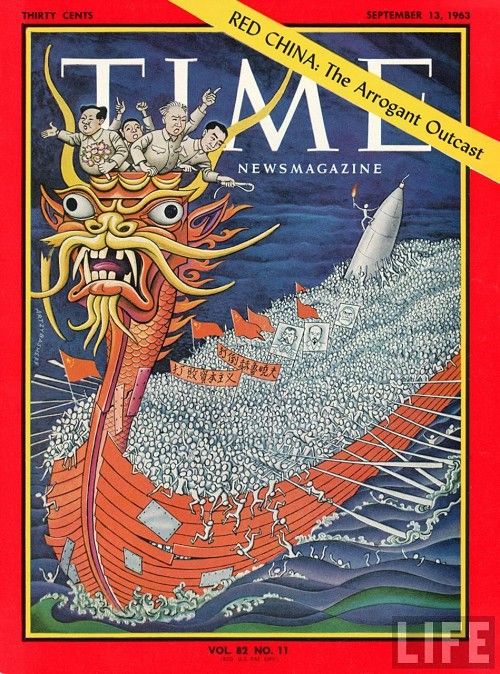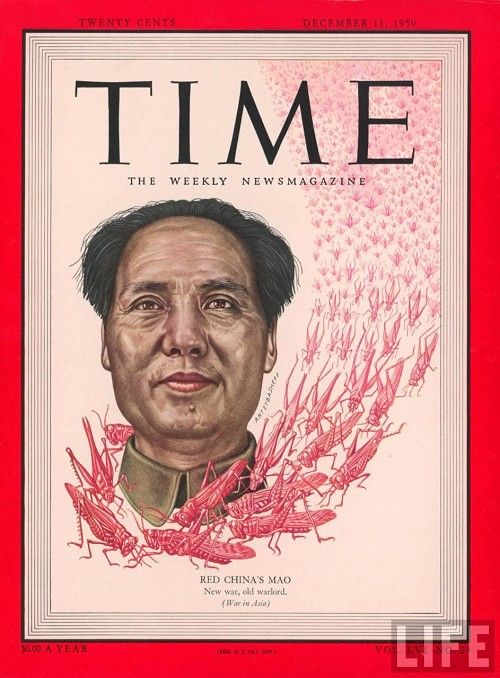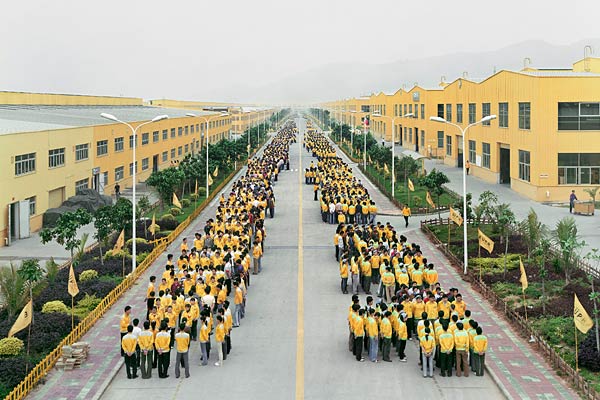A quick response to a post on [The China Beat] that caught a trend I've been meaning to post on for a while.
Writes one T.S. Mullaney about Foreign Policy's recent "
Rise of the Hans" feature:
Whoever at Foreign Policy thought of this image—in particular, thought of using the metaphor of clones—captured the essence of Kotkin’s argument flawlessly: the Han, we are meant to believe, is a singular mass of physically, politically, ideologically, socially, culturally, and linguistically indistinguishable replicas, one that brings to mind the clone troopers of Kamino in Star Wars or, perhaps, hive-like, sci-fi adversaries, such as the “Buggers” in Orson Scott Card’s Ender’s Trilogy, the Arachnids of planet Klendathu in Robert Heinlen’s Starship Troopers (who, incidentally, was writing in the aftermath of the Korean War and was also fascinated by the racist idea of an ego-less, self-less, and homogenous Asian adversary), or the Borg of Star Trek (a tendency that some commentators have explicitly used to refer to the PRC—something that one of the co-founders of China Beat criticized in a piece that appeared in Foreign Policy itself last year). Kotkin omits, or perhaps does not know, that the Han is one of the least homogenous groups history has ever known: contained within its ranks are people who literally cannot understand each other’s spoken languages and people who—let’s just be basic about this—exhibit the same sort of diversity of worldviews as one would expect to find among a group of one billion people anywhere on earth.


Let us call this discursive construct Neo-Borgian Yellow Peril, earlier images of which are exemplified by the two TIME covers below (locusts are 1950, teeming mass from 1963.
From ChinaSMACK.) The mass, which in the early 20th century may have ridden very quickly on horses to invade America, but now ride very studiously on state-owned enterprises to invade world order. I am remiss in finding one particularly amazing image from the mid-1970s that depicts Mao as an aggregation of clamoring peasants and mandarins.
The Neo-Borgian Cloud has in fact been a trend in the visual representation of many Chinese events since the Olympics (see images below).The eeriness comes from a post-processing that invariably sharpens digital images, heightens color and smooths noise to convey that squeaky gleam of capitalist modernism - and a simultaneous proclivity for compositions that capture seemingly boundless duplication (ie terror of scale), immaculate repetition (ie terror of forced homogeneity) that projects the power of an authoritarian state.This is not to say that there is not a desire to
project this very image of state power.
There is likely a good term for this. Perhaps it exists already in the fecund world of art criticism. I suggest militaristic hyper-modernism.
From various sources, two shots from Olympic opening ceremonies, security exercise outside of the Bird's Nest, laborers outside of their factory and students preparing for exams.











